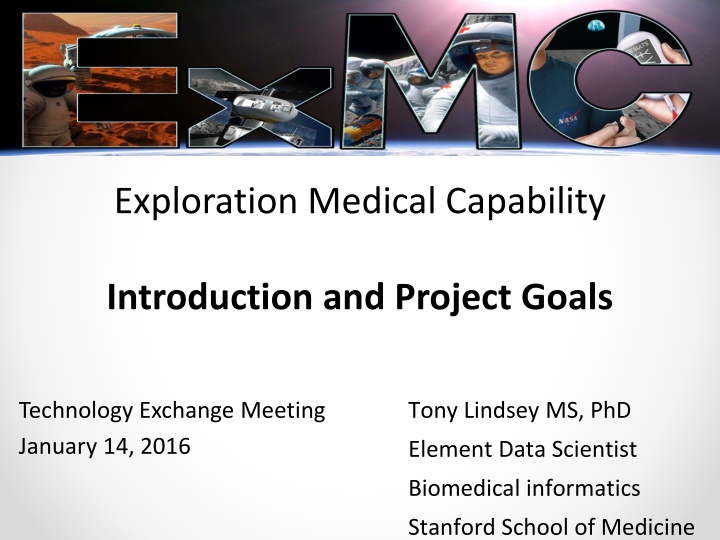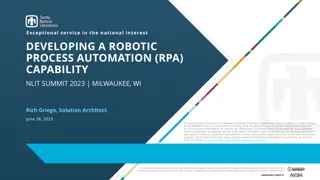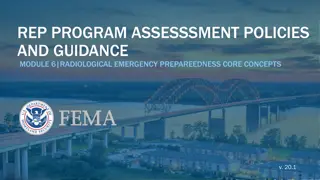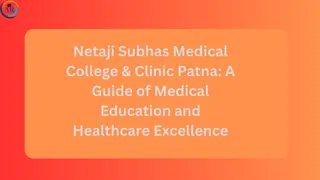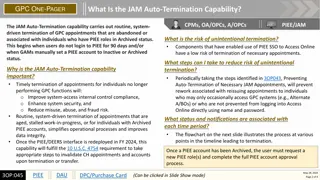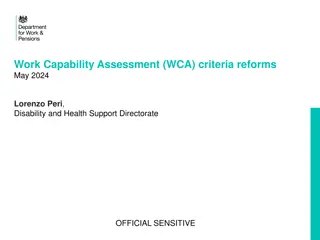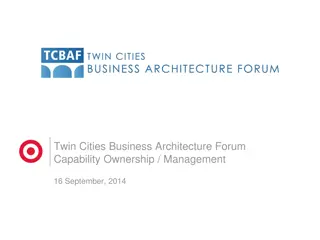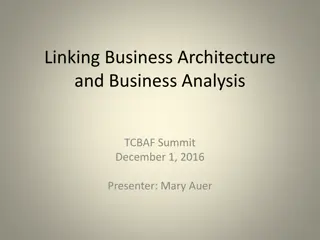Exploration Medical Capability
In this project, Tony Lindsey, MS, PhD, discusses Exploration Medical Capability and its goals for space exploration. The mission focuses on reducing medical risks and enhancing capability for space missions. The organization, responsibilities, and objectives of the ExMC element in space medicine operations are detailed, highlighting the importance of a robust medical system to support crew health and mission success. The project emphasizes preventive healthcare measures and technological advancements to ensure crew well-being in challenging environments.
Download Presentation

Please find below an Image/Link to download the presentation.
The content on the website is provided AS IS for your information and personal use only. It may not be sold, licensed, or shared on other websites without obtaining consent from the author.If you encounter any issues during the download, it is possible that the publisher has removed the file from their server.
You are allowed to download the files provided on this website for personal or commercial use, subject to the condition that they are used lawfully. All files are the property of their respective owners.
The content on the website is provided AS IS for your information and personal use only. It may not be sold, licensed, or shared on other websites without obtaining consent from the author.
E N D
Presentation Transcript
Exploration Medical Capability Introduction and Project Goals Tony Lindsey MS, PhD Technology Exchange Meeting January 14, 2016 Element Data Scientist Biomedical informatics Stanford School of Medicine
Objectives Overview of Exploration Medical Capabilities Element ExMC Mission and Responsibilities ExMC Medical System for Space Exploration Risk Reduction and Medical Capability Summary 2
Introduction Exploration Medical Capability (ExMC) Element Space Medicine Operations Human Research Program SD (HRP) 3
ExMC Element Organization Data Architecture Medical Decision Support Ames Research Center (ARC) Biosensors Lab Analysis Exploration Medical Capability (ExMC) Element Center Lead Tianna Shaw Technology Watch Manager Mike Canga Deputy Manager Bara Reyna, D Eng Scientist Erik Antonsen, MD, PhD Integrated Medical Model Physician CMO Deputy Scientist Ronak Shah, DO, MBA Element Integrators Jennifer Goss Element Integrator Michelle Urbina Glenn Research Center (GRC) Consumables Tracking Flexible Ultrasound Oxygen Concentrator Sterile Fluid Generation Center Lead Sam Hussey Suction & Fluid Containment Technology Watch Johnson Space Center (JSC) National Space Biomedical Research Institute (NSBRI) Dorit Donoviel, PhD Ginger Wotring, PhD Concept of Operations Pharmacy Provision Personalized Medicine Center Lead Kerry McGuire Integrated Medical Model MONSTR Langley Research Center (LaRC) Technology Watch WBS Legend Center Lead Matt Simon Portfolio Management Vehicle Integration Medical Habitable Volume Knowledge Development Technology Development 4 Technology Watch Technology Watch
Our Mission The medical system supports healthy crew to enable completion of mission objectives. We are concerned with adverse health prevention not just catastrophic events. To minimize mission medical risk through medical system development and integration into the overall mission and vehicle design. 5
6 6
ExMC Responsibilities Risk Title: Performance due to Inflight Medical Conditions Risk of Adverse Health Outcomes & Decrements in Description: Given that medical conditions will occur during human spaceflight missions, there is a possibility of adverse health outcomes and decrements in performance during these missions and for long term health. Other ExMC Risks: 1. Risk of bone fracture due to spaceflight induced changes in bone. 2. Risk of ineffective or toxic medications due to long term storage. 3. Risk of renal stone formation. 7
Spaceflight Medical Events Risk Top 100 In Mission Medical Events and 30 Specific Human Risks ~100 Medical Events ~30 Specific in IMM Human Risks Abdominal Injury Abdominal Wall Hernia Aerobic Capacity Acute Radiation Abnormal Uterine Bleeding Dynamic Loads (overlap) Altitude Sickness Appendicitis Decompression Sickness Electric Shock Cardio Acute Diverticulitis EVA Injuries HSDI Anaphylaxis Angina/ Myocardial Infarction Hearing Loss Immune (some overlap) Atrial Fibrillation/ Flutter Eye Abrasions Renal Stones Stroke Micro (some overlap) Dental Sleep Sudden Cardiac Arrest Muscle Diverticulitis Back Pain Specific Toxic Exposure Nutrition/Food Gall Bladder Urinary Retention Behavioral/Depression Neuro-vestibular Hernia Bone Fracture VIIP Long Term Osteoporosis Indigestion Carbon Dioxide (headache) Medication Storage Med Overdose/Reaction Celestial Dust Exposure Orthostatic Intolerance Pancreatitis Radiation (long term) Sepsis Sunlight Exposure Team Cooperation .. 8
Goal Develop a System A comprehensive medical system to support the crew in Exploration Missions targeting autonomy. In order to do this, ExMC will need integration with vehicle systems single point solutions are not desirable for Exploration Missions. Networked Exploration Medical Information Support and Integration System Provide for centralized medical care Enhance available knowledge base Provide for electronic training needs Monitor supplies for crew Monitor crew as needed Streamline communication with ground flight surgeons Decrease likelihood of medical errors 9
Medical System Capture Diagram Medical Equipment Sensors Performance Behavioral Monitor Imaging 3-D Printing Devices Biomonitors Environmental Rehab Medications EVA Exercise Monitor Exercise Behavioral Data Streaming Tracking Consumables Training Medical Procedures Caregiver Interface EMS Food Imaging Techniques Medications Behavioral Intervention Fluids Displays / Conferencing Medical Eq. EMR Intelligence Augmentation Vehicle Data Interface AMP References Pharmacologic Models IMM Toxicologic Medical Decision Support Medical Imaging MONSTeR Telemedicine Semi-autonomy Training Modules Digital Astronaut Autonomy Radiation Up-To-Date TM 10
How to decompose the work Incremental and Iterative Approach Pedigree: DoDAF Relationships between research divisions in the Exploration Medical Capability Element. 11
Gap Restructuring Enables System Creation Safe and Effective Pharmacy Oxygen Delivery Medical Suction Ultrasound Imaging Laboratory Analysis Biosensors/EKG Risk 1 2 4 5 3 Capability 12
Summary These gaps lead to a conceptual progression for medical system development to replace single point solutions for exploration mission medical needs. Analog version testing of this system with operational flight surgeons ensures medical operations relevance. Specific deliverables from this structure buy down the primary medical risk in a step-wise fashion through creating medical capability. This necessitates integration with vehicle design concepts early in the design cycle. 13
